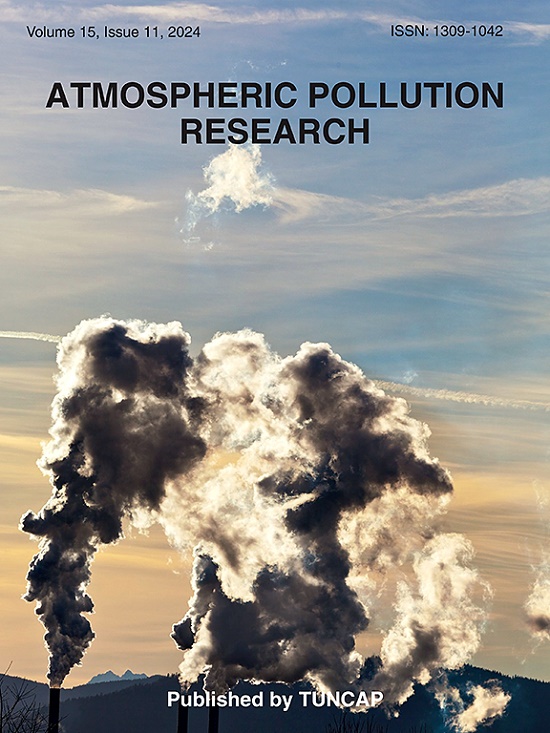In-cabin PM2.5 and black carbon exposure in Mumbai, India: Intermodal differences and impact of traffic conditions
IF 3.5
3区 环境科学与生态学
Q2 ENVIRONMENTAL SCIENCES
引用次数: 0
Abstract
In-cabin air pollution varies across transportation modes, yet the influence of evolving urban traffic characteristics (such as average speeds, peak hours, and congestion intensity) on commuter exposure remains understudied. Increasing traffic volumes and shifting travel behaviours have altered these mobility parameters, particularly in rapidly growing cities. This study quantifies fine particulate matter (PM25) and black carbon (BC) concentrations across seven common commute modes—auto-rickshaws, buses (with and without air conditioning), passenger cars, metro rail, suburban trains, and motorbikes—in a major Indian megacity. Data were collected over 194 fixed-route trips (96 in winter, 98 in summer), capturing seasonal variation and a wide range of traffic conditions. Metro rail exhibited the lowest mean PM2.5 (54 ± 10 μg/m3) and BC (8 ± 3 μg/m3) levels, while auto-rickshaws showed the highest BC concentrations (52 ± 11 μg/m3), indicating substantial inter-modal differences in pollutant infiltration. PM2.5 levels declined with increasing vehicle speed, whereas both speed and ambient traffic density influenced BC concentrations. Congestion significantly exacerbated in-cabin exposure: a ∼20 % increase in bus trip duration was associated with a 1.6–2.4-fold rise in PM2.5 and a 1.2–1.8-fold increase in BC levels. These findings underscore the role of traffic conditions in modulating commuter exposure and highlight the need for targeted interventions to mitigate in-transit air pollution in urban environments.

印度孟买的机舱内PM2.5和黑碳暴露:多式联运的差异和交通状况的影响
车内空气污染因交通方式而异,但不断变化的城市交通特征(如平均速度、高峰时间和拥堵强度)对通勤者暴露的影响仍未得到充分研究。交通量的增加和出行行为的转变改变了这些出行参数,特别是在快速发展的城市。这项研究量化了印度一个大城市七种常见的通勤方式——机动三轮车、公共汽车(有和没有空调)、乘用车、地铁、郊区火车和摩托车的细颗粒物(PM25)和黑碳(BC)浓度。收集了194次固定路线旅行(冬季96次,夏季98次)的数据,捕捉了季节变化和广泛的交通状况。地铁的平均PM2.5(54±10 μg/m3)和BC(8±3 μg/m3)水平最低,而机动三轮车的平均BC浓度最高(52±11 μg/m3),表明不同运输方式的污染物渗透存在显著差异。PM2.5水平随车速的增加而下降,而车速和周围交通密度都影响BC浓度。交通拥堵显著加剧了客舱内的暴露:巴士旅行时间增加约20%,PM2.5增加1.6 - 2.4倍,BC水平增加1.2 - 1.8倍。这些发现强调了交通条件在调节通勤者暴露中的作用,并强调了有针对性的干预措施以减轻城市环境中交通中空气污染的必要性。
本文章由计算机程序翻译,如有差异,请以英文原文为准。
求助全文
约1分钟内获得全文
求助全文
来源期刊

Atmospheric Pollution Research
ENVIRONMENTAL SCIENCES-
CiteScore
8.30
自引率
6.70%
发文量
256
审稿时长
36 days
期刊介绍:
Atmospheric Pollution Research (APR) is an international journal designed for the publication of articles on air pollution. Papers should present novel experimental results, theory and modeling of air pollution on local, regional, or global scales. Areas covered are research on inorganic, organic, and persistent organic air pollutants, air quality monitoring, air quality management, atmospheric dispersion and transport, air-surface (soil, water, and vegetation) exchange of pollutants, dry and wet deposition, indoor air quality, exposure assessment, health effects, satellite measurements, natural emissions, atmospheric chemistry, greenhouse gases, and effects on climate change.
 求助内容:
求助内容: 应助结果提醒方式:
应助结果提醒方式:


